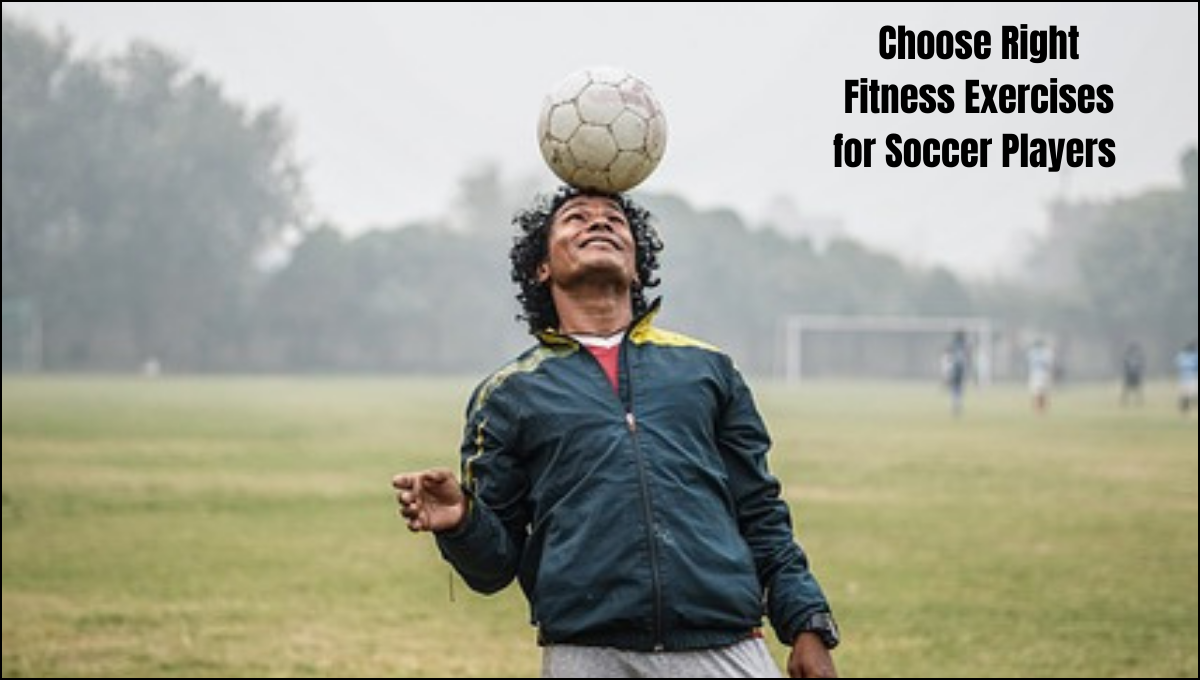Top Fitness Exercises for Soccer Players in the USA
Soccer is a physically demanding sport that requires players to be agile, fast, and strong. To excel on the field, athletes need to perform specific fitness exercises that target key muscle groups and enhance overall performance. Whether you are a professional soccer player or an aspiring athlete, the following fitness exercises are designed to boost strength, speed, agility, and endurance, ensuring you are always ready for game day.
Importance of Fitness for Soccer Players
Before diving into the best exercises for soccer players, it is important to understand the significance of fitness in the sport. Soccer players rely on their physical attributes to navigate the pitch with ease, outpace opponents, and maintain high performance throughout the match. The following fitness areas are essential for soccer players:
- Endurance: Soccer matches can last up to 90 minutes, requiring players to sustain energy throughout the game.
- Speed and Agility: Quick direction changes, sprints, and fast footwork are essential to beat opponents.
- Strength: Power in the legs and core is necessary for kicking, jumping, and tackling.
- Flexibility: A flexible body reduces the risk of injury and improves overall mobility.
With that said, the best fitness exercises for soccer players focus on improving these attributes.
1. Plyometric Exercises for Explosive Power
Plyometrics are high-intensity exercises that focus on explosive power, which is essential for quick sprints, jumps, and tackling. Incorporating plyometric training into your routine helps develop fast-twitch muscle fibers, enabling you to explode off the line and outpace defenders.
Box Jumps
- Targeted Muscles: Quads, hamstrings, calves, and glutes.
- How to Do It: Stand in front of a sturdy box or platform. Jump explosively onto the box, ensuring that both feet land simultaneously. Step down and repeat for 3 sets of 10 reps.
Jump Lunges
- Targeted Muscles: Glutes, quads, hamstrings, and calves.
- How to Do It: Start in a lunge position, then jump explosively, switching legs mid-air. Land softly in a lunge position and repeat for 3 sets of 12 reps on each leg.
2. Agility Drills to Enhance Quickness and Coordination
Soccer players need to make quick, sharp movements to avoid defenders and react to changing game scenarios. Agility drills are crucial for improving footwork, body coordination, and quick directional changes.
Cone Drills
- Targeted Muscles: Quads, calves, hamstrings, and core.
- How to Do It: Set up a series of cones in a straight line or zig-zag pattern. Sprint to the first cone, touch it, then change direction quickly to the next cone. Continue for 3 sets of 5 reps.
Ladder Drills
- Targeted Muscles: Core, calves, hamstrings, and quads.
- How to Do It: Use an agility ladder and perform various footwork drills such as the two-feet-in-each-box or lateral in-and-outs. Focus on speed and precision while maintaining good posture.
3. Core Strengthening Exercises
A strong core is vital for soccer players as it improves balance, stability, and overall power during dynamic movements. Core exercises should be a staple in every soccer player’s training routine.
Planks
- Targeted Muscles: Core, glutes, and shoulders.
- How to Do It: Position yourself in a push-up stance but lower your body to rest on your forearms. Keep your back straight and hold the position for as long as possible. Aim for 3 sets of 30 seconds to 1 minute.
Russian Twists
- Targeted Muscles: Obliques, abs, and lower back.
- How to Do It: Sit on the ground with your knees bent and feet flat. Lean back slightly and twist your torso from side to side, holding a medicine ball or weight. Perform for 3 sets of 15 reps per side.
4. Strength Training for Lower Body Power
Soccer players require powerful legs to sprint, kick, and jump. Strengthening the lower body through resistance training can greatly improve performance on the field.
Squats
- Targeted Muscles: Quads, hamstrings, glutes, and calves.
- How to Do It: Stand with your feet shoulder-width apart, lower your body as if you are sitting back into a chair, and then push yourself back up to standing. Perform 3 sets of 12-15 reps.
Lunges
- Targeted Muscles: Glutes, quads, hamstrings, and calves.
- How to Do It: Take a step forward into a lunge position, lowering your back knee toward the ground. Push off the front foot to return to the starting position. Perform 3 sets of 12 reps per leg.
Deadlifts
- Targeted Muscles: Hamstrings, glutes, quads, and lower back.
- How to Do It: Stand with your feet shoulder-width apart and grip a barbell. Keeping your back straight, hinge at the hips to lower the barbell toward the ground, then return to standing. Perform 3 sets of 10 reps.
5. Cardiovascular Exercises for Stamina and Endurance
Endurance is crucial for soccer players as the game involves sustained activity over long periods. Building cardiovascular fitness allows players to maintain a high level of performance without tiring too quickly.
Interval Sprints
- Targeted Muscles: Legs, glutes, and core.
- How to Do It: Sprint at full intensity for 20-30 seconds, then walk or jog for 1-2 minutes. Repeat for 10-15 rounds, focusing on speed during the sprint intervals.
Long-Distance Running
- Targeted Muscles: Legs, glutes, and core.
- How to Do It: Run at a moderate pace for 30-45 minutes, focusing on maintaining a consistent pace. This will build cardiovascular endurance and stamina for sustained efforts during matches.
6. Flexibility and Mobility Exercises
Flexibility plays a vital role in injury prevention and performance. Soccer players must maintain a full range of motion to perform explosive movements without straining their muscles.
Dynamic Stretching
- Targeted Muscles: All major muscle groups.
- How to Do It: Perform leg swings, hip circles, and high knees to warm up the muscles. This increases blood flow and prepares the body for intense activity.
Static Stretching
- Targeted Muscles: Hamstrings, quads, hip flexors, calves, and lower back.
- How to Do It: After training, perform slow, controlled stretches for 30 seconds to each muscle group. This helps in improving flexibility and reducing the risk of muscle tightness.
7. Injury Prevention and Recovery
Maintaining a regular fitness routine is crucial for injury prevention. It’s important to integrate recovery exercises, rest, and proper nutrition to keep the body in peak condition.
Foam Rolling
- Targeted Muscles: All major muscle groups.
- How to Do It: Roll each muscle group slowly for 1-2 minutes. This helps release tightness and prevents muscle soreness after intense workouts.
Stretching and Hydration
- Ensure that you stretch before and after workouts to maintain flexibility. Hydrate well to avoid muscle cramps and injuries.
Conclusion
Incorporating these fitness exercises into your soccer training routine will help improve your strength, speed, agility, and overall performance. Soccer is a highly demanding sport, and training your body to be quick, strong, and injury-resistant will set you apart from your competitors. To achieve peak performance, combine these exercises with proper nutrition, recovery, and a commitment to your fitness journey.






